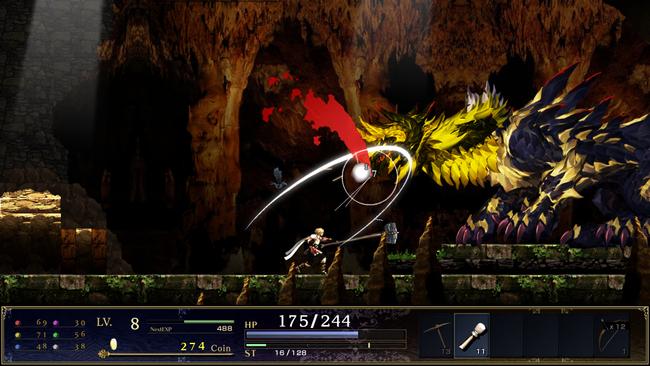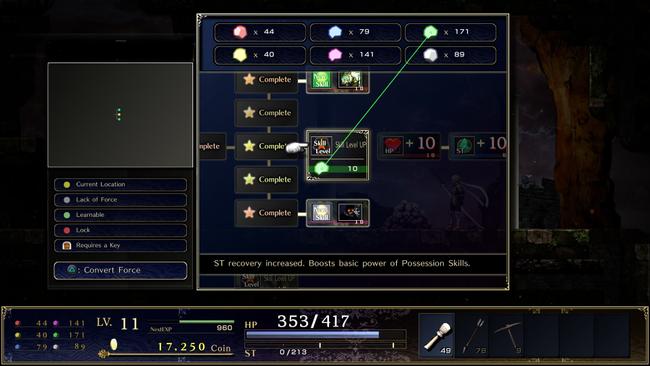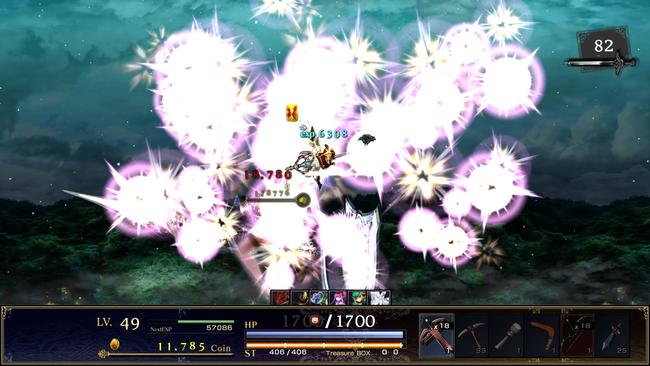
Astlibra Revision Review
To be honest, I don't know where to start with Astlibra Revision. When the game released in October this year, it completely flew under my radar at the time. The only reason I started playing was due to the glowing recommendation of a friend of a friend. The only thing I knew going in was that the game was created mostly single-handedly by an indie developer by the name of KEIZO over the span of a little more than a decade. With little knowledge of the game, I had no idea what to expect, but I decided to give it a try regardless. After 70 or so hours of playtime, I do not regret the decision. As our regular podcast listeners will know, the game is nothing less than a wild trip.
After researching the game's long history, I found that the original version is still available as a Japanese-only freeware title. However, if you purchase the game on Steam, there are many quality-of-life features such as the improved sprites as well as the game's engine being reworked to support widescreen formats instead of just the 4:3 screen ratio available in the free version. Additionally, there is also a new post-game chapter.
The story of Astlibra begins with our nameless protagonist attempting to escape from a demon attack alongside his childhood friend. After getting knocked unconscious, he awakes to find that his friend is missing, and is soon confronted by a mysterious talking crow named Karon who has no memory of their past. Hoping to find his friend, any remaining traces of humanity, as well as hints to Karon's identity, the two decide to work together. As the story progresses, our protagonist comes across an ancient artefact known as Astraea’s Scale which triggers the ability to travel through time based on events that occur throughout the story.
Astlibra generally follows an episodic structure seeing the protagonist through missions in the search of clues related to the whereabouts of his friend. Though as cliché as this may seem on the surface, the plot is quite unpredictable and the story is exciting, often leading to interesting twists and turns. Unfortunately, there are some issues in the English localization, since a lot of the translation felt unnaturally stiff, if not somewhat dry; possibly even machine translated at certain parts. Though if there was one major thing to point out, it is that there is a lot of vulgarity and dirty humour that may be a turn-off for some players. But considering that the game began development over a decade ago, the tropes may just be a reflection of the time it was created, so I would try to keep an open mind and not take it too seriously.

Going into the presentation, the game is a 2D action, side-scrolling RPG. The details of the backgrounds, although prerendered, do look quite nice with each location having a distinctive look and feel. The best aspect of this in my opinion is the large quantity of equipment available and how it changes the protagonist’s appearance. Graphically, it's definitely not going to stand out compared to larger indie titles but it is still good for what it offers. As far as music goes, the soundtrack of the game is largely license-free music by a variety of creators from the internet, but this is by no means a negative as most of the tracks are pleasant to listen to; though some tracks do sound a little over grandiose for the settings they are used in. Unfortunately, due to these circumstances, you probably will never see an official soundtrack release for this game, but on the plus side, the game does include a music player if you want to give the OST a listen.
Now, before I get into any further details how do I describe this game? If there is one game specifically that comes to mind that I would compare to Astlibra, I would consider it a spiritual successor to Ys III: Wanderers From Ys. But Astlibra isn't exactly a clone, per-se, as the game has also clearly been influenced by other series like Castlevania and Zelda. However unlike Zelda and Ys who tried to, unsuccessfully, innovate their gameplay using a side-scrolling point of view for their sequels, Astlibra benefits from decades worth of game design history. As a result, it features fluid combat as well as many modern ideas. Despite this, the game still uses a very archaic method of solving puzzles when exploring. You cannot brute force any solutions as you will need to manually use items to solve puzzles, but thankfully, the game does provide a healthy amount of hints throughout the story. This might be a let-down to some players but it does capture a retro feel really well.
The combat system starts off rather simple as the player can only initially deal a combo of slashes, but as the protagonist learns new abilities from the equipment he collects, the game will quickly force you to change how you play. Even though some players might find it a bit of a grind, I personally found it to be fun as no matter how small of a reward gained, it will still benefit the protagonist's progression in some way. Killing enemies will drop items known as “Force” crystals allowing you to access upgrades in the “GROW” system. To those familiar with JRPGs it will resemble a blend of the Sphere Grid from Final Fantasy X and a dungeon crawler mini-game. The crystals you have collected will be used to unlock nodes that will permanently upgrade the protagonist with higher stats and new abilities. The items dropped by enemies also contain recipes to build equipment available in the current chapter thus encouraging grinding to a certain extent.

The combat can start off feeling a little awkward and dated at first, but the game quickly grows on you with many of the mechanics linking together in interesting ways. Stat management is a core consideration to finding success in Astlibra, as the protagonist's build and attack speed is determined by these stats. It is possible to create many types of builds as you play through the game based on how well you allocate your stats whenever you level up. Thankfully there isn't any consequence to this system as you can easily re-spec the protagonist equipment within any of the shops you find. There is no one ideal build required to finish the game, as a friend and I ended up completing the game using completely different builds. The only issue is there are some stats that are a little irrelevant such as the adaptability parameter that only affects your character in a very minor way. While other stats like agility just need to maintain a certain threshold in order to get the max attack speed bonus; only limiting creativity to builds entirely focused on offensive playstyles.

The protagonist is also supported by his trusty companion who we met at the beginning of the game, Karon the crow. Karon allows you to equip a bunch of passive abilities that are only limited to the number of magic crystals you have gained from mastering equipment and other means. These abilities can affect things such as your movement speed or even change your playstyle completely, such as “berserk” mode which allows you to deal three times your normal damage at the cost of dying instantly if hit once. Karon even has its own form of magic called Possession. Possession temporarily transforms Karon into an elemental spirit unleashing powerful magic abilities. These abilities have invincibility frames upon activation and I found myself mostly using them for this purpose as they proved crucial in surviving difficult fights. However, there are drawbacks as they don't negate status ailments and require a high costing, passive ability from magic crystals to bypass this problem.
Now, as I mentioned earlier, there is an extended epilogue created just for the Steam version of the game. Without getting too much into spoilers I'll say it functions basically as a harder New Game+ with all your equipment and items intact, but is also story relevant as it goes on to expand the game's lore in a rather interesting way as well as introduce a few new gameplay mechanics. First, you can find items called board tablets that will randomly slot equipment from your inventory; The board tablets will also affix 4 sets of random upgrades to the piece of gear currently inserted and the equipment stats are scaled to fit the post game settings. This makes it really difficult to min-max due to randomness and drop rates. Second, there is a feature that lets you enhance your existing equipment with any extra materials you have found throughout your adventure. Lastly, there is even a randomised dungeon near the end that is similar to an Astlibra spinoff that is not yet released in the west. Overall the post-game feels like an entirely different experience from the base game, but is a great addition to an already dense package.
As great as my experience was with Astibra there is one late-game issue I feel could have been mitigated a little bit better, and that would be the steep difficulty spike around the last quarter of the main story. During these parts, the game will often pit you against swarms of enemies all at once, including multiple bosses that can easily one-shot the protagonist. I found myself just running past these enemies around these points quite often since the risk-reward didn't seem worth the chance of dying. But besides these specific areas generally, the sense of accomplishment for overcoming the challenges felt worth the effort because while not easy, they can be overcome through the player’s capabilities and the story of Astibra alone is compelling enough to make you want to push forward.
Astlibra is by no means a perfect game and I think that is okay. I still feel Astlibra is excellent and shows what a 2D action, side-scrolling RPG is capable of, while maintaining a retro feel. If you’re a fan of 2D action RPGs, Astlibra is truly a hidden gem this year and can be easily overlooked. I highly recommend this game as it is truly a labour of love by its creator that should not be ignored, even if it's just for the time and dedication that was put into it.